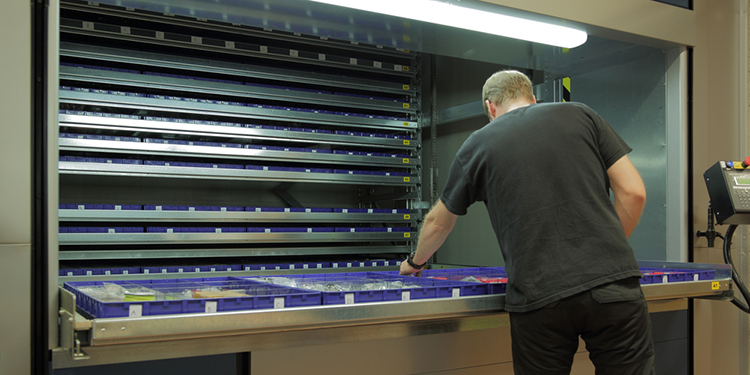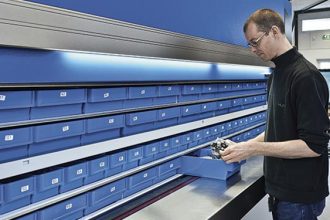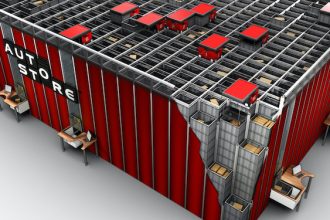Need Dense Storage? There’s An AS/RS For That

Deployments of automated storage and retrieval systems, also known as AS/RS or ASRS, are anticipated to grow by 7.37% in the next five years as more and more operations recognize the value they bring. These computer-controlled systems automatically place loads in precise storage locations, then retrieve them as needed quickly and accurately.
Among their many advantages, ASRS provide highly compressed storage of items. This saves up to 85% of floorspace because they maximize cubic volume within a building. Other benefits include:
- Increased throughput and accuracy boosted by up to 99.99% because pickers are directed to pick the correct item;
- Better worker ergonomics as items are presented at the optimal, waist height;
- 85% greater productivity because extensive walk time is eliminated; and
- Real-time inventory control as all items stored within are tracked by the system software.
Whether the items to be stored are palletized or not, large or small, heavy or light, fast movers or slow, there’s an ASRS solution available to handle them. The systems themselves come in seven types:
- Unit Load ASRS: These machines typically store palletized loads weighing 1,000 pounds or more. The storage structure is pallet rack constructed to heights up to 100 feet or more. Software directs the automatic placement and retrieval of loads via a telescoping crane device.
- Mini-Load ASRS: Similar to Unit Load ASRS, these crane-based machines handle lighter loads weighing 1,000 pounds or less. Instead of pallets, items are stored on trays, in reusable plastic totes, or in cartons.
- Vertical Lift Modules (VLMs): Self-contained, these machines consist of a column of fixed or dynamic (to optimize space) storage trays in the front and back. An automatic inserter/extractor in the center stores and retrieves required trays of required products.
- Horizontal Carousels: Ideal for storage of small pieces or parts, these machines feature a series of tightly compressed bins that rotate horizontally around a track, similar to a merry-go-round. Multiple horizontal carousels are often deployed together in an integrated workstation, allowing one or two workers to pick continuously with minimal wait time.
- Vertical Carousels: Rotating vertically, like a Ferris wheel, these systems house a series of shelves or carriers. They are frequently used for storage of fast-moving, small items, such as tooling, components or raw materials.
- Shuttles: Robotic devices used for the automated handling of totes, trays, cartons (or all three in the same system), these goods-to-person systems deliver higher throughput based on the number of shuttles utilized. The shuttles travel independently on rails from level to level. Modular and scalable, these systems can easily expand as business needs change.
- Cube-Based Storage: Ultra-high-density goods-to-person piece picking systems that incorporate robots to store and retrieve inventory bins from a cubic storage grid. Bins are delivered to a worker for picking or replenishment or conveyed to remote picking stations for order fulfillment.
Depending on item profiles and storage density needs, one or more types of ASRS systems might be implemented within the same building. Looking for additional details? More information about the different kinds of ASRS available is detailed in a series of videos produced by the Automated Storage and Retrieval Systems Industry Group of MHI.



